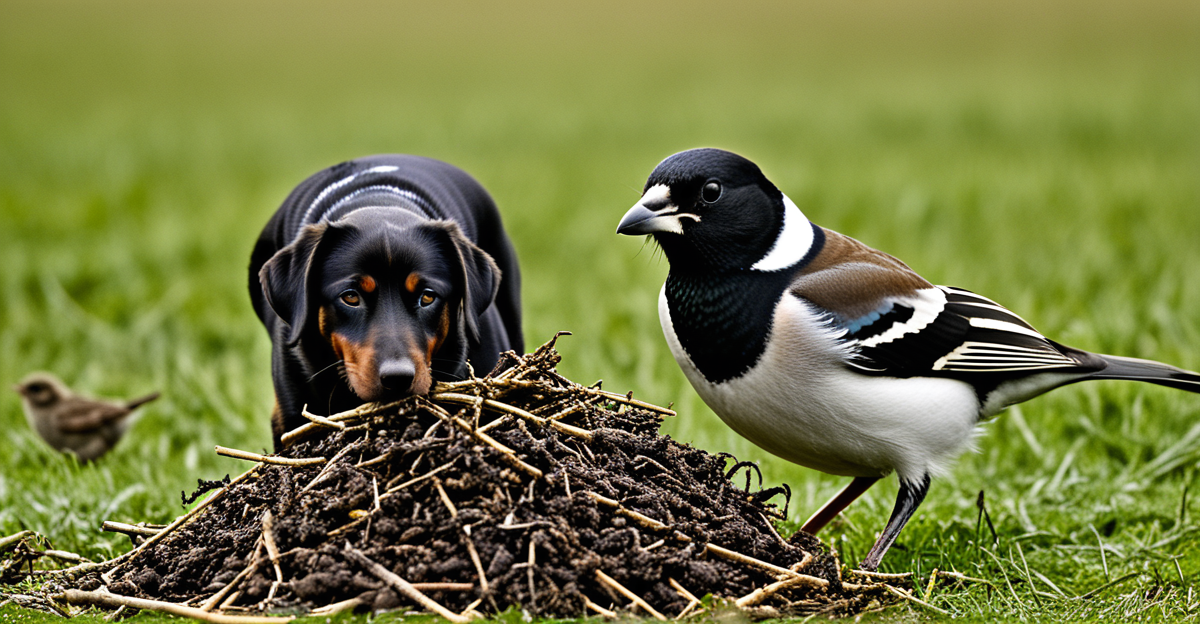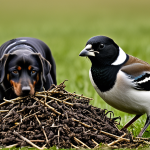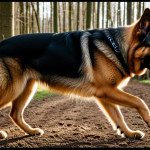The Importance of Safeguarding Ground-Nesting Birds in the UK
Ground-nesting birds in the UK, such as lapwings, skylarks, and meadow pipits, hold vital roles in maintaining ecosystem balance. Their nests, often built directly on open grasslands or heathlands, are exceptionally vulnerable during the breeding season, which generally spans from late March to July. During this period, disturbance by dogs can significantly reduce hatching success and chick survival rates.
Dog walking impact is a primary cause of nest abandonment or predation, as even well-behaved dogs can unintentionally damage nests or flush birds, leaving eggs and chicks exposed to predators and harsh weather. Specifically, the dog walking impact disrupts essential feeding and brooding behaviors, which can lead to population declines in already at-risk species.
Avez-vous vu cela : Must-have plants for uk gardens: boosting native butterfly populations naturally
Wildlife conservation leaders emphasize that UK dog owners have a responsibility to protect these birds by adhering to seasonal restrictions and keeping dogs under close control in sensitive areas. By understanding their role in conservation, dog walkers can help prevent disturbance and contribute positively to preserving biodiversity. Ground-nesting birds UK are indicators of healthy habitats, so safeguarding them ensures the broader environment thrives.
Understanding Regulations and Local Guidelines
Navigating dog walking laws UK is crucial for protecting ground-nesting birds during their vulnerable breeding season. These laws often include seasonal restrictions designed to reduce the dog walking impact on nesting sites. For example, many nature reserves enforce limits on dog access from late March to July, directly aligning with the birds’ reproductive cycle.
A découvrir également : Exploring the uk’s legal strategies to combat wildlife poaching
The Countryside Code serves as a fundamental guide for dog owners, promoting responsible behaviour such as keeping dogs on leads near wildlife habitats and adhering to posted signage. Wildlife protection regulations frequently require compliance with local signs indicating protected zones, temporary closures, or leash requirements.
Knowing where and when dogs can be walked safely requires awareness of these rules and local governance, as regulations can vary between councils and conservation areas. Resources for staying informed include national park offices, local wildlife trusts, and official government websites, which provide updates on seasonal restrictions and access changes.
By integrating this knowledge into daily dog walking routines, owners help minimise disturbance and contribute to the conservation of ground-nesting birds UK. Understanding these legal frameworks not only protects vulnerable species but also promotes harmony between recreation and wildlife preservation.
Innovative and Practical Tactics for Dog Owners
Controlling dogs to protect ground-nesting birds UK requires more than just good intentions; advanced dog control methods can make a significant difference. Using GPS collars allows owners to monitor their dog’s location precisely, ensuring the dog stays away from sensitive nesting areas. Similarly, long lines provide a physical boundary, combining freedom for the dog with safety for wildlife. Training commands such as ‘unseen stay’ empower owners to keep dogs at a distance without constant visual supervision, reducing spontaneous disturbance.
Establishing dog-friendly routes and ‘safe zones’ based on current wildlife monitoring information helps dog walkers avoid areas with active nests. This proactivity supports both wildlife conservation and enjoyable, worry-free walks. Local authorities or wildlife trusts often share maps showing sensitive sites, making route planning easier.
Participating in community conservation schemes or citizen science projects strengthens this effort. Dog owners actively engaged in monitoring bird populations or reporting nest disturbances become vital partners in safeguarding these species. These tactics together create a practical, solution-oriented approach that balances pet care with protecting vulnerable birds from dog walking impact.
Firsthand Tips and Interactive Solutions from UK Owners and Experts
Learning from UK dog owner advice is invaluable when aiming to protect ground-nesting birds UK during the sensitive breeding season. Many owners share that clear communication with local rangers and bird conservationists enhances understanding of specific site risks. This collaboration delivers conservation best practices tailored to each area, making responsible dog walking both practical and effective.
Case studies show that owners who actively adjust their routes using interactive maps experience fewer conflicts with wildlife. These tools allow dog walkers to avoid known nests and sensitive zones, reducing the dog walking impact significantly. For example, some community apps provide real-time updates on bird activity, helping owners plan walks that respect breeding habitats.
Practical guidance from experts emphasizes maintaining control and patience, especially in open grassy areas frequented by ground-nesting birds UK. Simple steps—like waiting calmly when birds are present or following posted signs—can make a profound difference.
Integrating firsthand advice, collaborative efforts, and technology equips dog owners with the confidence and knowledge to balance recreation with wildlife conservation. This approach fosters a community of informed walkers actively engaged in safeguarding vulnerable bird populations across the UK.
Connecting with Organisations and Further Resources
Connecting with bird conservation groups is a crucial step for dog owners committed to protecting ground-nesting birds UK. These organisations offer valuable advice, support, and resources tailored to responsible dog walking practices near sensitive habitats. Engaging with such groups can deepen understanding of the local ecology and specific conservation challenges posed by the dog walking impact.
Trusted organisations provide accessible materials, including downloadable guides and educational videos, which outline practical steps to minimise disturbance. For instance, learning about timing walks around breeding seasons or recognising vulnerable nesting sites aids in responsible behaviour. Additionally, wildlife spotting apps developed or endorsed by these groups offer real-time data, empowering owners to make informed decisions on-the-go.
Many conservation groups also organise awareness initiatives and volunteer patrols, presenting opportunities for dog owners to actively participate in safeguarding bird populations. This involvement fosters a community spirit and enhances the collective impact of individual actions.
By tapping into these responsible dog walking resources, owners can balance enjoyment with effective wildlife conservation. Collaboration with organisations ensures that efforts to protect ground-nesting birds UK are informed, sustained, and rewarding.










